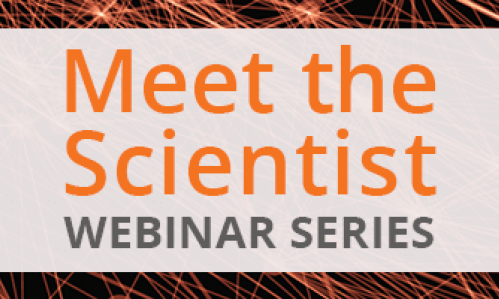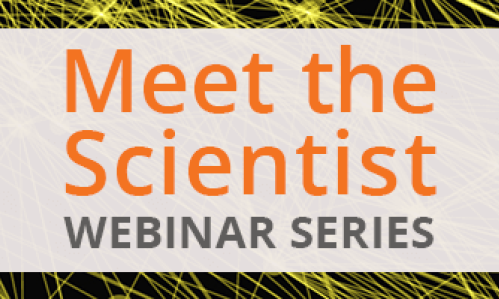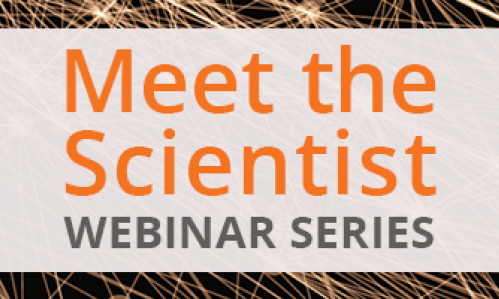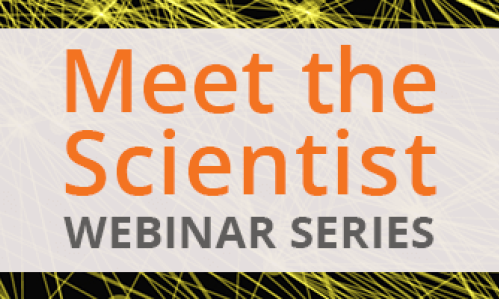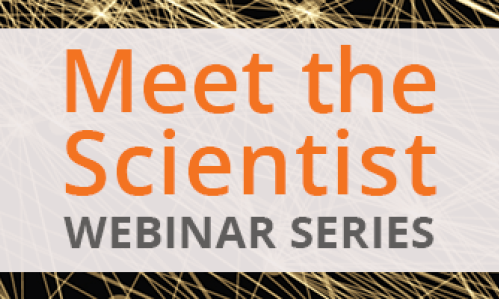Frequently Asked Questions about Post-Traumatic Stress Disorder (PTSD)
Frequently Asked Questions about Post-Traumatic Stress Disorder (PTSD)
Post-Traumatic Stress Disorder (PTSD) is a disorder that develops in some people who have experienced a shocking, scary, or dangerous event.
It is natural to feel afraid during and after a traumatic situation. Fear triggers many split-second changes in the body to help defend against danger or to avoid it. This “fight-or-flight” response is a typical reaction meant to protect a person from harm. Nearly everyone will experience a range of reactions after trauma, yet most people recover from initial symptoms naturally. Those who continue to experience problems may be diagnosed with PTSD. People who have PTSD may feel stressed or frightened even when they are not in danger.
* Source: National Institute of Mental Health
Impactful PTSD Research Discoveries by Foundation Grantees:
- Findings About a Fear-Driven Learning Circuit Could Inform Efforts to Develop More Effective PTSD Treatments
- Freeze or Run? Opposing Neural Circuits in the Brain Control Reactions to Fear
- Researchers Identify Gene Associated with Post-Traumatic Stress Disorder
- Researchers Unravel New Details of How the Brain Processes Fear
For our most recent research summaries, click here.
Post-Traumatic Stress Disorder (PTSD) is an anxiety disorder that some people get after seeing or living through a dangerous event. When in danger, it’s natural to feel afraid. This fear triggers many split-second changes in the body to prepare to defend against the danger or to avoid it. This “fight-or-flight” response is a healthy reaction meant to protect a person from harm. In PTSD, this reaction is changed or damaged. People who have PTSD may feel stressed or frightened even when they’re no longer in danger.
Anyone can get PTSD at any age. This includes war veterans and survivors of physical and sexual assault, abuse, accidents, disasters and many other traumatic events. Not everyone with PTSD has been through a dangerous event. Some people get PTSD after a friend or family member experiences danger or harm. The sudden, unexpected death of a loved one can also cause PTSD.
PTSD can cause many types of symptoms. The symptoms can be generally grouped into three categories:
- Re-experiencing symptoms:
- Flashbacks—the trauma is relived over and over and includes physical symptoms such as elevated heart rate and perspiration
- Nightmares
- Frightening thoughts
Re-experiencing symptoms may cause problems in a person’s everyday routine. They can start from the person’s own thoughts and feelings or from outside words, objects or situations that trigger re-experiencing.
- Avoidance symptoms:
- Staying away from places, events or objects that are reminders of the experience
- Feeling emotionally numb
- Feeling strong guilt, depression or worry
- Losing interest in activities that were enjoyable in the past
- Having trouble remembering the dangerous event
Things that remind a person of the traumatic event can trigger avoidance symptoms. These symptoms may cause a person to change his or her personal routine. For example, after a bad car accident, a person who usually drives may avoid driving or riding in a car.
- Hyper-arousal symptoms:
- Being easily startled
- Feeling tense or “on edge”
- Having difficulty sleeping, and/or having angry outbursts
Hyper-arousal symptoms are usually constant, instead of being triggered by things that remind one of the traumatic event(s). They can make the person feel continually stressed and angry, making it difficult to do daily tasks, such as sleeping, eating or concentrating.
It’s natural to have some of these symptoms after a dangerous event. Sometimes people have very serious symptoms that go away after a few weeks. This is called acute stress disorder, or ASD. When the symptoms last more than a few weeks and become an ongoing problem, it might be PTSD. Some people with PTSD don’t show any symptoms for weeks or months.
According to John H. Krystal, M.D., of Yale University School of Medicine:
In some cases, particularly where it is not treated, PTSD can last a very long time, perhaps the remainder of one’s life. Most people with longstanding PTSD find that the symptoms are not steady in their severity. For some people, PTSD symptoms gradually fade over time. Other people find that symptoms may increase when they encounter reminders of their traumatic events. Read the rest of Dr. Krystal's answer on our Ask an Expert page.
A doctor who has experience helping people with mental illnesses, such as a psychiatrist or psychologist, can diagnose PTSD. The diagnosis is made after the doctor talks with the person who has symptoms of PTSD.
To be diagnosed with PTSD, a person must have all of the following for at least 1 month:
- At least one re-experiencing symptom
- At least three avoidance symptoms
- At least two hyper-arousal symptoms
- Symptoms interfere with daily life, such as going to school or work, being with friends, taking care of important tasks.
A number of treatment techniques, sometimes combined with one another, are being used with varying degrees of success:
- Cognitive behavioral therapy, to help people recognize their ways of thinking, or “cognitive patterns,” that keep them stuck
- Exposure therapy, to help people safely face what they fear, in order to learn to cope with it (virtual reality devices are often used to simulate a situation or setting in which the trauma took place)
- Eye movement desensitization and reprocessing, or EMDR, which combines exposure therapy with a series of guided eye movements that help people process traumatic memories and change the way they respond to those memories
- Anti-anxiety medications and antidepressants can also ease the symptoms of PTSD; some people with PTSD whose symptoms include insomnia or recurrent nightmares find relief with a medication called prazosin that blocks the effect of adrenaline in the body
- Osanetant, a medication that has been tested in humans to treat schizophrenia, and was found to be safe but ineffective, has recently been found to block fear memories in mice shortly after exposure to a trauma; it targets a distinct group of cells in the brain that controls the formation and consolidation of fear memories. According to Foundation Scientific Council member Kerry Ressler, M.D., Ph.D., who led the research at Emory University, osanetant shows potential to aid in preventing PTSD from developing if administered in the emergency room or battlefield, for example, before traumatic memories consolidate.
Children and teens can have extreme reactions to trauma, but their symptoms may not be the same as adults. In very young children, these symptoms can include:
- Bedwetting, after having been toilet-trained
- Forgetting how or being unable to talk
- Acting out the scary event during playtime
- Being unusually clingy with a parent or other adult.
Older children and teens usually show symptoms more like those seen in adults. They may also develop disruptive, disrespectful or destructive behaviors. Older children and teens may feel guilty for not preventing injury or deaths. They may also have thoughts of revenge.
It is important to remember that not everyone who lives through a dangerous event experiences post-traumatic stress disorder (PTSD). In fact, most will not get the disorder.
Many factors play a part in whether a person will get PTSD. Some of these are risk factors that make a person more likely to get PTSD. Other factors, called resilience factors, can help reduce the risk of the disorder. Some of these risk and resilience factors are present before the trauma and others become important during and after a traumatic event.
Risk factors for PTSD include:
- Living through dangerous events and traumas
- Having a history of mental illness
- Getting hurt
- Seeing people hurt or killed
- Feeling horror, helplessness or extreme fear
- Having little or no social support after the event
- Dealing with extra stress after the event, such as loss of a loved one, pain and injury, or loss of a job or home
Resilience factors that may reduce the risk of PTSD include:
- Seeking out support from other people, such as friends and family
- Finding a support group after a traumatic event
- Feeling good about one’s own actions in the face of danger
- Having a coping strategy, or a way of getting through the bad event and learning from it
- Being able to act and respond effectively despite feeling fear.
Researchers are studying the importance of various risk and resilience factors. With further researcher, it should become possible to predict who is likely to get PTSD, how resilience can be learned and prevent it.
A significant number of veterans suffer from PTSD: up to 20 percent of those who served in the Iraq and Afghanistan wars and up to 30 percent of those who served in Vietnam. But PTSD can result from a variety of traumatic or life-threatening incidents such as sexual assault, child abuse, accidents, bombings, or natural disasters such as tornadoes, for example. Even witnessing a traumatic event can cause PTSD. In the United States, about seven or eight out of every 100 people will have PTSD at some point in their lives. During a given year, some five million adults are coping with PTSD.
In their 20 years of treating and studying trauma survivors, Dennis S. Charney, M.D., of the Icahn School of Medicine at Mount Sinai and Steven M. Southwick, M.D., of Yale School of Medicine identified ten common practices in people who have shown resilience in the face of extreme stress:
- Maintaining an optimistic but realistic outlook
- Facing fear (ability to confront one’s fears)
- Relying upon one’s own inner, moral compass
- Turning to religious or spiritual practices
- Seeking and accepting social support
- Learning from and imitating sturdy role models
- Staying physically fit
- Staying mentally sharp
- Cognitive and emotional flexibility (finding a way to accept that which cannot be changed)
- Looking for meaning and opportunity in the midst of adversity
Find answers to more questions about PTSD in our Ask the Expert section.
View our Meet the Scientist Webinar on PTSD: Updates on the Science Behind PTSD
Donate Now
Donations are welcome



